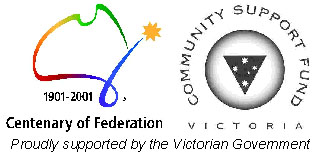Supporter
Royal Society of Victoria
Details
The Royal Society of Victoria was founded in 1854 and is Victoria's oldest learned society. Its aim is to contribute to the advancement of science and, through science, to the good of the Victorian community.
The Society carries out this aim by:
- providing a forum for discussion of scientific and technological issues relevant to the community;
- bridging the communication gap between scientific disciplines;
- bringing significant scientific and technological issues to the attention of government and other decision makers.
Since its foundation in 1854, the Royal Society of Victoria has had sixty-four presidencies. Three of the earliest Presidents were Captain Andrew Clarke, the Surveyor General, Mr Justice Redmond Barry, First Puisne Judge of the Supreme Court of Victoria, and Baron Sir Ferdinand von Mueller, Government Botanist and Director of the Botanic Gardens, three visionaries who set the foundations for the broad and deep scientific infrastructure that supports modern Victoria.
Development of these pages was made possible through the project, Science and the Making of Victoria, supported by the Victorian Government through the Centenary of Federation and the Community Support Fund.

Foundation Supporter of
- Agar, Wilfred Eade (1882 - 1951)
- Aitchison, Gordon Douglas (1918 - 2003)
- Anderson, Valentine George (1885 - 1969)
- Archbold, Neil Wilfred (1950 - 2005)
- Baldwin, Joseph Mason (1878 - 1945)
- Baracchi, Pietro Paolo Giovanni Ernesto (1851 - 1926)
- Baragwanath, William (1878 - 1966)
- Barkly, Henry (1815 - 1898)
- Barry, Redmond (1813 - 1880)
- Blackwood, Robert Rutherford (1906 - 1982)
- Bleasdale, John Ignatius (1822 - 1884)
- Bolotin, Herbert Howard (1930 - 2020)
- Briggs, William R.S.
- Butcher, Alfred Dunbavin (1915 - 1990)
- Casey, Dermot Armstrong (1897 - 1977)
- Chapman, Frederick (1864 - 1943)
- Chinner, John Harding (1915 - 2001)
- Churchill, David Maughan (1933 - 2019)
- Clarke, Andrew (1824 - 1902)
- Davis, John King (1884 - 1967)
- Dennant, John (1839 - 1907)
- Dunn, Edward John (1844 - 1937)
- Ellery, Robert Lewis John (1827 - 1908)
- Esserman, Norman Abraham (1896 - 1982)
- Ewart, Alfred James (1872 - 1937)
- Garran, Richard Randolph (1903 - 1991)
- Gill, Edmund Dwen (1908 - 1986)
- Hall, Thomas Sergeant (1858 - 1915)
- Hills, Edwin Sherbon (1906 - 1986)
- Jamieson, James (1840 - 1916)
- Kernot, William Charles (1845 - 1909)
- Kershaw, James Andrew (1866 - 1946)
- Laby, Thomas Howell (1880 - 1946)
- Law, Phillip Garth (1912 - 2010)
- Lay, Maxwell Gordon (1936 - )
- Leeper, Geoffrey Winthrop (1903 - 1986)
- Lovering, John Francis (1930 - 2023)
- Mahony, Daniel James (1878 - 1944)
- McCoy, Frederick (1817 - 1899)
- Microscopical Society of Victoria (1873 - 1954)
- Morrison, James Douglas (1924 - 2013)
- Morrison, Philip Crosbie (1900 - 1958)
- Mueller, Ferdinand Jakob Heinrich von (1825 - 1896)
- O'Brien, Terence Phillip (1937 - )
- Oliver, Calder Edkins (1855 - 1930)
- Osborne, William Alexander (1873 - 1967)
- Patton, Reuben Tom (1883 - 1962)
- Pescott, Richard Thomas Martin (Dick) (1905 - 1986)
- Philosophical Institute of Victoria (1855 - 1859)
- Philosophical Society of Victoria (1854 - 1855)
- Royal Society of Victoria (1859 - )
- Sanson, Gordon Drummon
- Shephard, John (1852 - 1940)
- Skeats, Ernest Willington (1875 - 1953)
- Sklovsky, Grigorij Abramovitch (1915 - 1995)
- Spencer, Walter Baldwin (1860 - 1929)
- Stawell, William Foster (1815 - 1889)
- Stillwell, Frank Leslie (1888 - 1963)
- Stubbs, Lionel Leslie (1916 - 2003)
- Summers, Herbert St John (1876 - 1963)
- Sweet, George (1844 - 1920)
- Turner, John Stewart (1908 - 1991)
- Victorian Institute for the Advancement of Science (1854 - 1855)
- Victorian Institute of Marine Sciences (1978 - 1996)
- Wadham, Samuel MacMahon (1891 - 1972)
- Watson, Graeme Field
- White, Edward John (1831 - 1913)
- Wisewould, Frank
- Young, William John (1878 - 1942)
- Zillman, John William (1939 - )
